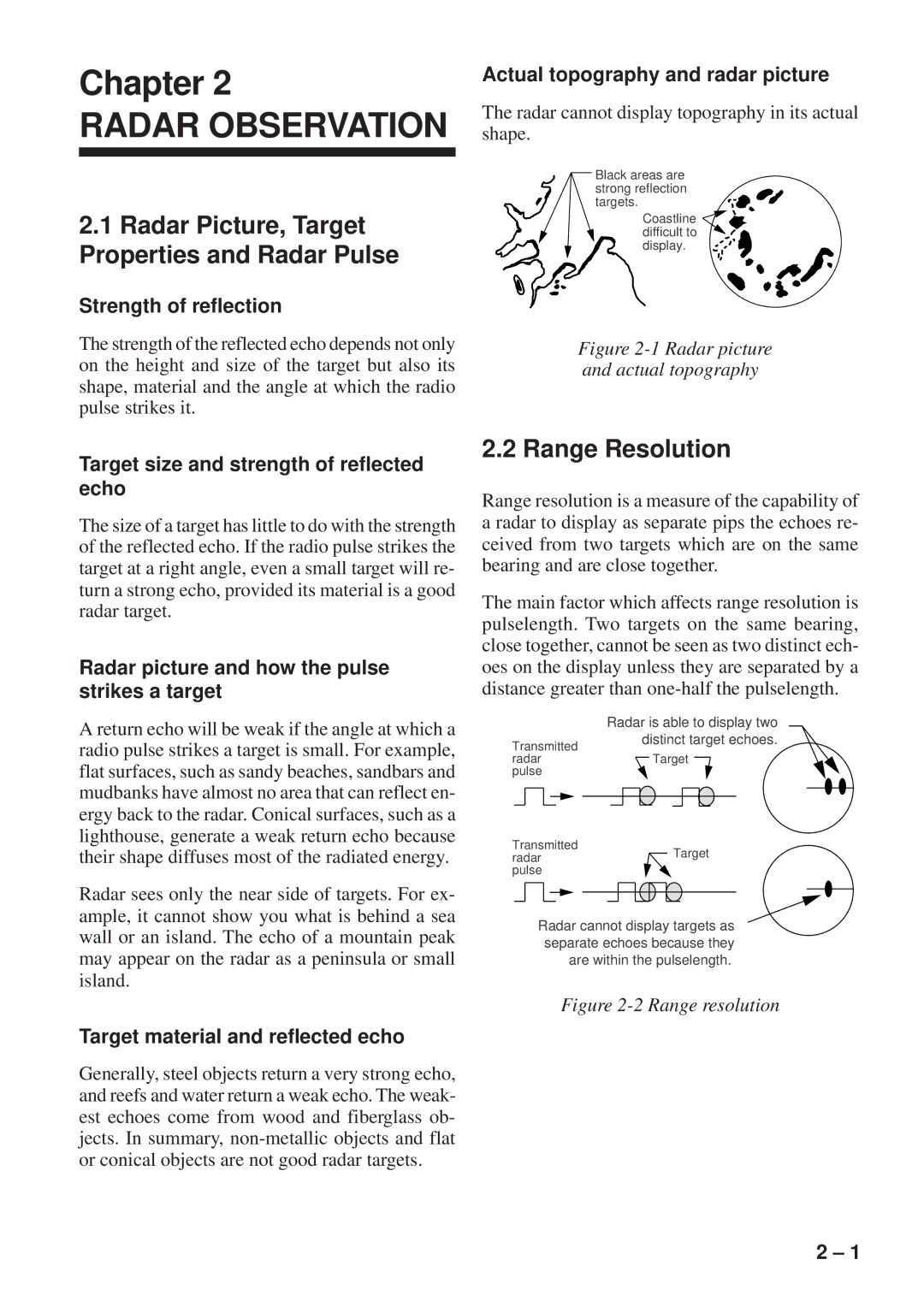
Chapter 2
RADAR OBSERVATION
2.1Radar Picture, Target Properties and Radar Pulse
Strength of reflection
The strength of the reflected echo depends not only on the height and size of the target but also its shape, material and the angle at which the radio pulse strikes it.
Actual topography and radar picture
The radar cannot display topography in its actual shape.
Black areas are strong reflection targets.
Coastline ![]() difficult to
difficult to ![]() display.
display.
Figure 2-1 Radar picture and actual topography
Target size and strength of reflected echo
The size of a target has little to do with the strength of the reflected echo. If the radio pulse strikes the target at a right angle, even a small target will re- turn a strong echo, provided its material is a good radar target.
Radar picture and how the pulse strikes a target
2.2 Range Resolution
Range resolution is a measure of the capability of a radar to display as separate pips the echoes re- ceived from two targets which are on the same bearing and are close together.
The main factor which affects range resolution is pulselength. Two targets on the same bearing, close together, cannot be seen as two distinct ech- oes on the display unless they are separated by a distance greater than
A return echo will be weak if the angle at which a radio pulse strikes a target is small. For example, flat surfaces, such as sandy beaches, sandbars and mudbanks have almost no area that can reflect en- ergy back to the radar. Conical surfaces, such as a lighthouse, generate a weak return echo because their shape diffuses most of the radiated energy.
Transmitted radar pulse
Transmitted radar pulse
Radar is able to display two distinct target echoes.
![]() Target
Target
Target
Radar sees only the near side of targets. For ex- ample, it cannot show you what is behind a sea wall or an island. The echo of a mountain peak may appear on the radar as a peninsula or small island.
Target material and reflected echo
Generally, steel objects return a very strong echo, and reefs and water return a weak echo. The weak- est echoes come from wood and fiberglass ob- jects. In summary,
Radar cannot display targets as separate echoes because they are within the pulselength.
Figure 2-2 Range resolution
2 – 1
